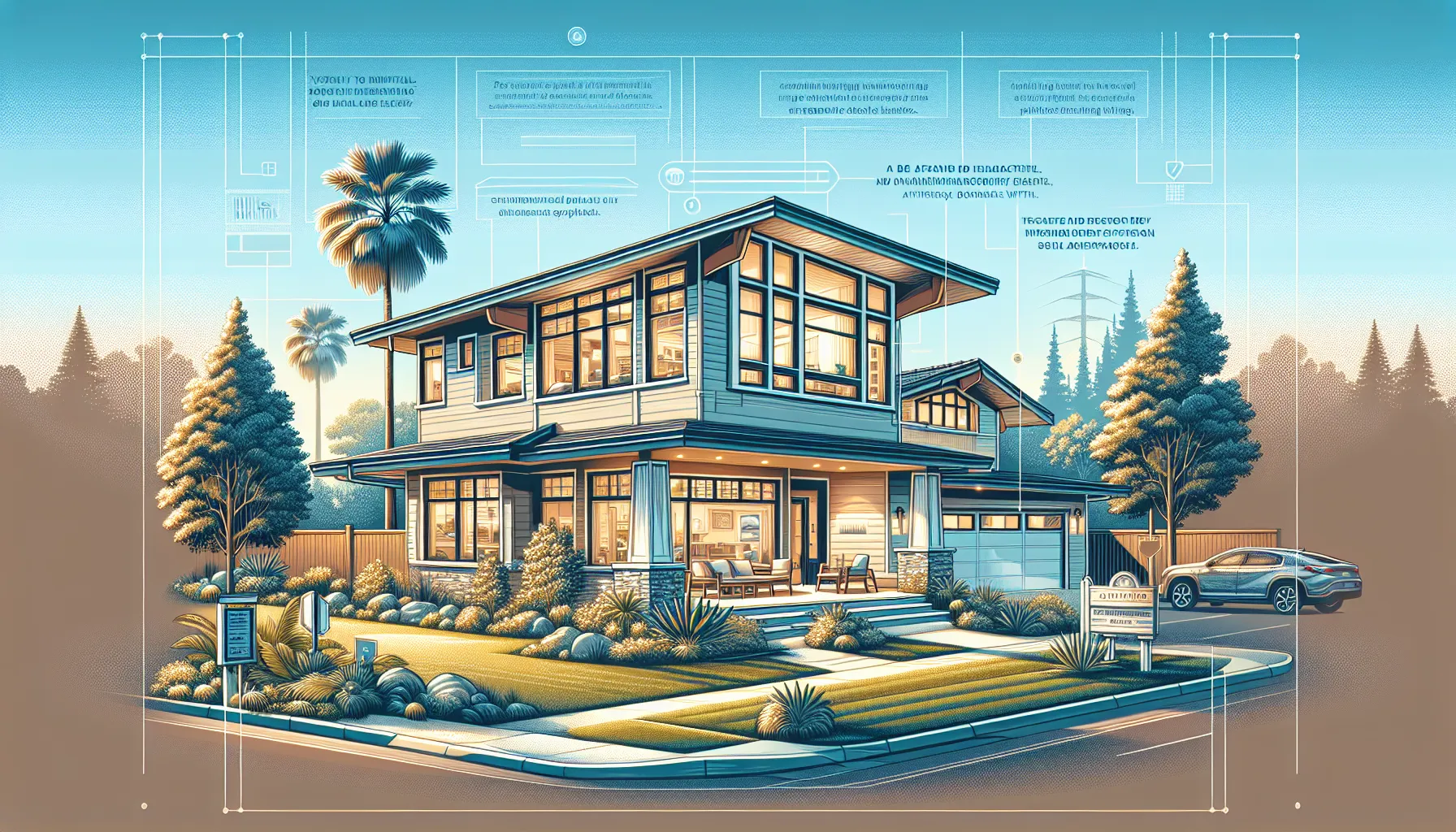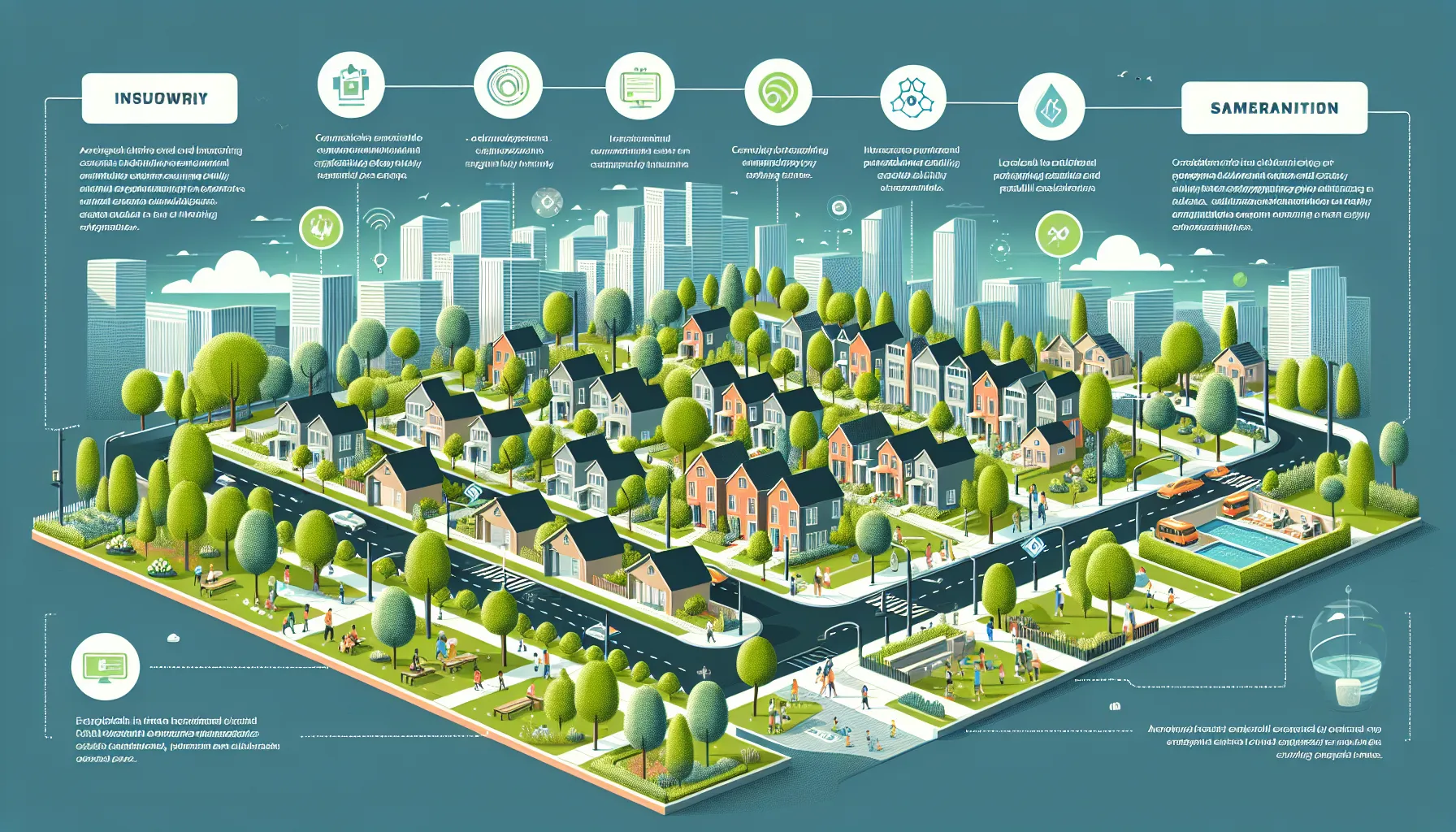Key Takeaways
- Pleasant Hill’s rental market is experiencing strong demand, with low vacancy rates and steadily rising rent prices for single-family homes, condos, and apartments.
- Updated homes near top schools and transit options, especially those with modern amenities like energy-efficient appliances and dedicated workspaces, are in highest demand among families and professionals.
- Popular neighborhoods such as Valley High, Poets Corner, Gregory Gardens, and Contra Costa Centre attract renters due to their proximity to schools, BART, and community amenities.
- Limited new housing developments contribute to ongoing competition for available rentals, particularly during peak moving seasons in spring and summer.
- The local job market, population shifts from larger Bay Area cities, and economic growth in sectors like tech and healthcare continue to drive sustained rental activity in Pleasant Hill.
- Staying informed about local trends, seasonal timing, and neighborhood differences helps both renters and property owners make smarter decisions in this evolving market.
Pleasant Hill’s rental market has seen noticeable shifts in recent years, and I know many people wonder what’s driving these changes. With more homeowners choosing to keep their properties as rentals and investors expanding their portfolios, demand in this area keeps rising. It’s easy to feel overwhelmed if you’re trying to make sense of price changes or searching for the right place to call home.
Are you curious about how these trends might affect your next move or investment decision? You’re not alone. Whether you’re a longtime resident or just starting to explore Pleasant Hill, understanding what’s happening with local rentals can help you make smarter choices. Let’s take a closer look at what’s shaping the current landscape and why it matters for renters and property owners alike.
Overview of Pleasant Hill Residential Rental Trends
Rental demand in Pleasant Hill has shifted notably in recent years. I see more homeowners choosing to turn their properties into rentals as they relocate or invest elsewhere, which means more options for renters looking for flexible housing. Investors are also adding to their portfolios, increasing the number of professionally managed homes here.
Rental rates show steady growth, with median rents for single-family homes rising about 4% year-over-year, based on regional housing data. This pattern reflects broader trends in the East Bay, where limited inventory and consistent population inflow keep vacancy rates low. Does this match what you’ve experienced while searching for a rental or listing one?
Property types in demand typically include updated single-family homes near schools such as Pleasant Hill Elementary and Valley View Middle, as well as condos with modern amenities. I frequently notice that families and working professionals focus on quiet neighborhoods with good walkability and easy access to BART for commuting.
Seasonal factors play a role too. Rental listings move quickly from late spring through early fall, with some homes leasing within two weeks. If you’re curious about timing your move, have you found it easier or more difficult during particular months?
Tenants currently seek homes with functional upgrades—features like energy-efficient appliances and dedicated work areas often receive more interest. Owners who invest in these improvements often find reduced vacancy times and higher tenant satisfaction.
If you’re comparing Pleasant Hill to nearby communities in the East Bay, rental rates here remain competitive with nearby Concord and Walnut Creek. However, Pleasant Hill’s smaller size and strong neighborhood feel can make available rentals harder to find, especially during peak demand. How important is neighborhood atmosphere for you when deciding on a rental?
Key Factors Influencing Rental Trends in Pleasant Hill

Several important forces shape rental prices and availability in Pleasant Hill. If you’re weighing your options as a renter, homeowner, or investor, these factors help explain why the market shifts and what to watch for in the coming year. What priorities are top-of-mind for you—stable pricing, easy commutes, or a certain type of neighborhood? These details matter.
Economic Growth and Job Opportunities
Local job markets influence Pleasant Hill rental trends. Tech, healthcare, and education create steady demand, particularly from professionals seeking easy commutes to nearby business centers. Proximity to BART and strong employment hubs in Walnut Creek and Concord gives Pleasant Hill a competitive edge. Rental demand often rises during periods of employment growth, since more households move in search of new job opportunities nearby.
Population Demographics and Migration Patterns
Changes in population size and who’s moving in help drive rental activity. Pleasant Hill attracts families, young professionals, and those relocating for work. Shifts in age groups—such as an increase in young families or retirees—alter the mix of housing preferences. In recent years, migration out of major San Francisco Bay cities has encouraged more renters to explore suburban settings like Pleasant Hill. Are you finding that your ideal neighborhood is attracting new faces lately?
Housing Supply and New Developments
Available homes and new construction projects play a central role in rental pricing. Limited inventory in Pleasant Hill, especially for single-family rentals and upgraded apartments, tends to increase competition for available units. Small-scale developments occasionally add new options, but much of the housing stock consists of older, well-maintained homes. When new apartments or condos appear, they’re often leased quickly, signaling unmet demand. Have you noticed how quickly properties fill up in your area during peak moving seasons?
Current Rental Market Statistics in Pleasant Hill

Pleasant Hill’s rental landscape keeps changing as demand shifts. Many renters and owners have questions about what today’s numbers mean for their decisions. Have you noticed how fast units fill, or wondered how current rents compare to nearby areas?
Average Rent Prices by Property Type
Average rent prices in Pleasant Hill depend on property type and recent improvements. Single-family homes typically command higher monthly rates, now averaging about $3,200 according to recent listings. Updated homes—those with new appliances or smart layouts—often push prices even higher. Condos and townhomes generally average around $2,500 per month, with smaller apartments trending just below $2,000.
Here’s a breakdown of average rents in Pleasant Hill:
| Property Type | Average Monthly Rent |
|---|---|
| Single-family home | $3,200 |
| Condo/Townhome | $2,500 |
| Apartment (1–2 bed) | $1,950 |
Have you found it difficult to locate a home in your budget, or are you seeing shorter listing times for certain types of rentals? These numbers reflect both the housing supply and the steadily increasing demand from families and professionals.
Vacancy Rates and Turnover
Vacancy rates in Pleasant Hill remain low, with estimates near 3% for most property types. Well-maintained single-family rentals and condos in move-in-ready condition tend to attract tenants quickly, sometimes within a week of being listed. This quick turnover often means renters need to act fast, especially during late spring and summer when activity peaks.
Turnover rates in Pleasant Hill are generally lower than in neighboring cities, with many tenants renewing leases to maintain proximity to schools, commuting options, and local amenities. For owners, this stability can translate to fewer gaps in occupancy. Have you ever wondered how long your next renter might stay, or what affects these rates in your neighborhood? These figures can help set your expectations whether you’re renting out or searching for a place.
Notable Neighborhoods and Their Rental Appeal

Many people searching for Pleasant Hill rentals want both a comfortable home and a vibrant community. Each neighborhood offers different benefits, making it easier to match rental options with your priorities. Are you looking for a peaceful street with top-rated schools, or do you prefer quick access to shopping and transit?
Popular Areas for Renters
I see strong demand in neighborhoods close to local schools, parks, and main transit routes. Areas near Pleasant Hill BART attract commuters, with rental homes in these locations leasing quickly—often within two weeks during peak season. Families often favor Valley High and Poets Corner, where tree-lined streets, larger yards, and proximity to schools help explain rental rates starting near $3,200 for updated single-family homes. Single professionals frequently choose apartments and condos near Crescent Drive or the city center, putting them within walking distance of shopping, restaurants, and gyms, with typical rents ranging from $1,900 to $2,400. Condos in these areas often feature updated kitchens and in-unit laundry, responding to requests for functional upgrades.
Emerging Hotspots in Pleasant Hill
Several neighborhoods are seeing more interest from renters in the past year. Gregory Gardens and the El Dorado neighborhoods, for example, now feature more renovated homes and fresh rental listings compared to previous seasons. Renters are drawn here by quieter blocks, outdoor spaces, and developing trail access. I’ve also noticed more listings in the Contra Costa Centre area. Renters find the fast Bay Area commute and walkable community to be key factors. Do you want to live near new coffee shops or fitness studios? This location offers both at monthly rates typically just under $2,600 for modern townhomes. Newer developments and apartment complexes with energy-efficient features are becoming favorites for tenants who prioritize home technology and lower utility costs.
Every Pleasant Hill neighborhood presents something a little different. What matters most to you—a quick commute, green parks, or top schools? Exploring these options helps renters and owners make choices matching their needs and lifestyles.
Future Outlook for Pleasant Hill Residential Rentals

Pleasant Hill’s residential rental scene will likely remain active, with steady demand supporting price growth over the next year. Renters continue to value well-maintained single-family homes and updated condos near good schools and transit. Many families and professionals now seek energy-efficient appliances, flexible workspaces, and walkable neighborhoods. Have you noticed how upgrade requests for features like smart thermostats or extra storage have increased?
New housing construction remains limited, which keeps vacancy rates low. As the population continues to shift from nearby urban hubs, pressure on available rentals increases each spring and summer. Renters often secure properties within two weeks, especially during peak months. Many owners find that consistent tenant renewals reduce turnover expenses, helping stabilize income.
Economic drivers in the East Bay, such as new jobs and improved public transit, attract renters who want predictable commutes and a strong sense of neighborhood. With average rents already around $3,200 for houses and $2,500 for condos, what strategies are you considering to set your budget or maximize cash flow? Owners and investors who maintain their properties and adjust rent expectations to match seasonal trends often see more consistent demand.
Pleasant Hill’s competitive rental rates set it apart from larger cities while offering a quieter, more connected community. Are you planning to expand your portfolio, or are you searching for a home that better suits your needs? Staying informed about local trends and upcoming developments could help you make confident decisions in Pleasant Hill’s dynamic rental landscape.
Conclusion
Staying tuned to Pleasant Hill’s rental market gives me a real edge whether I’m searching for a new place or considering renting out my property. The landscape keeps evolving with shifting demands and new opportunities popping up each season. I find that keeping an eye on local trends and being ready to act quickly can make all the difference in finding the right fit or maximizing returns. As Pleasant Hill continues to grow and attract new residents it’s clear that understanding the market is more important than ever.
Frequently Asked Questions
What is driving the increased demand for rentals in Pleasant Hill?
The increased demand is mainly due to homeowners converting properties into rentals and investors buying more rental properties. Economic growth, job opportunities, and migration from larger Bay Area cities are also attracting more renters to Pleasant Hill.
How much have rental prices increased in Pleasant Hill?
Rental prices for single-family homes in Pleasant Hill have risen about 4% year-over-year. The median rent is approximately $3,200 for single-family homes, $2,500 for condos or townhomes, and just under $2,000 for smaller apartments.
What type of rental properties are most in demand?
Updated single-family homes near good schools and condos with modern amenities are especially popular. Renters also prefer quiet neighborhoods with walkability and easy access to BART for commuting.
Are there seasonal trends in Pleasant Hill’s rental market?
Yes, rental demand is strongest from late spring through early fall. During this time, listings move quickly, and well-maintained properties with upgrades like energy-efficient appliances and dedicated workspaces are especially sought after.
How do Pleasant Hill’s rental prices compare to nearby communities?
Pleasant Hill’s rents are competitive with neighboring East Bay cities. However, the city’s smaller size and strong community feel mean available rentals can be harder to find, especially during peak demand.
What neighborhoods are most popular for renters in Pleasant Hill?
Families prefer areas like Valley High and Poets Corner near schools, while single professionals choose spots near Crescent Drive or the city center. Gregory Gardens, El Dorado, and Contra Costa Centre are emerging as top choices for renovated homes and modern amenities.
What should renters prioritize when searching in Pleasant Hill?
Prioritize well-maintained properties in neighborhoods with good schools, easy commutes, walkability, and upgrades like energy-efficient features and home workspaces. Early searches during peak rental seasons provide the best options.
What is the current vacancy rate and how quickly do rentals turn over?
Vacancy rates are around 3%, meaning rentals fill quickly—especially well-maintained homes and condos. Turnover is brisk, with many tenants renewing their leases each year.
How is Pleasant Hill’s rental market expected to change in the next year?
Steady demand and low vacancy rates will likely keep prices rising. More renters are seeking modern, energy-efficient homes with flexible work areas, and limited new construction will increase competition for available rentals.
What factors should property owners consider before renting out a home in Pleasant Hill?
Owners should consider the high demand for updated homes, the benefits of proximity to schools and transit, and the importance of regular maintenance to ensure competitive rental rates and attract quality tenants. Staying informed about local trends is key.
